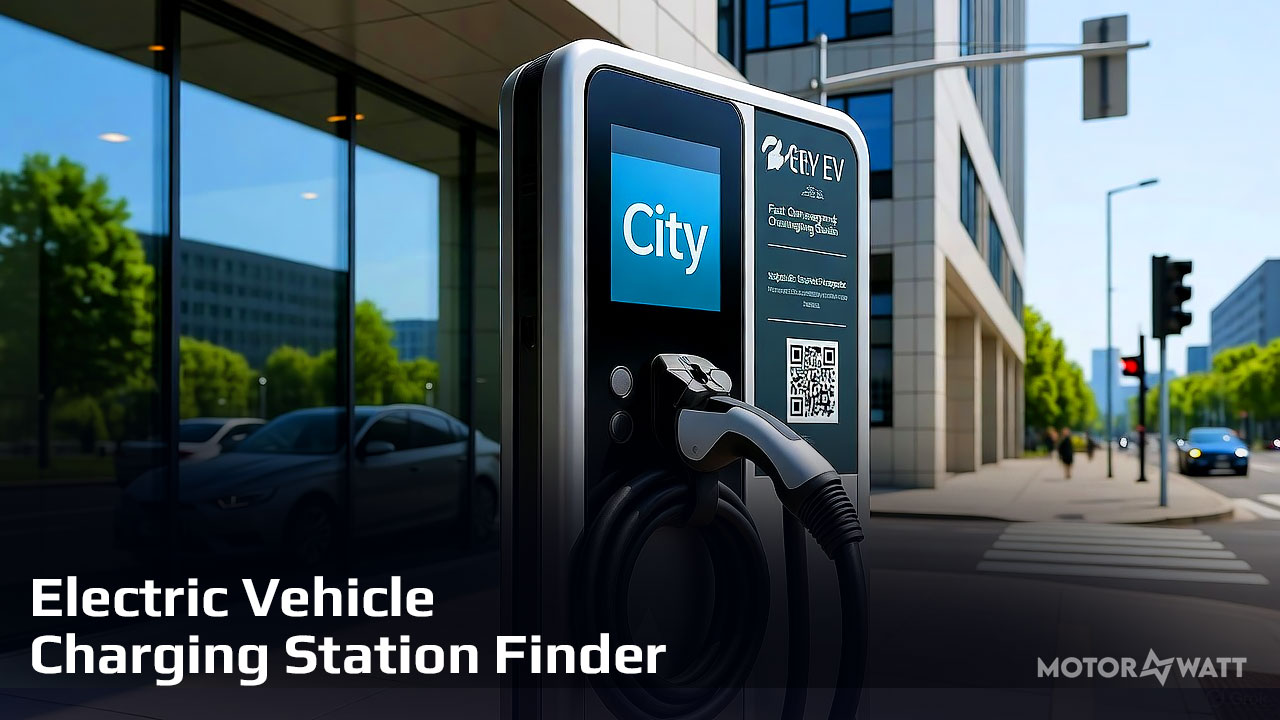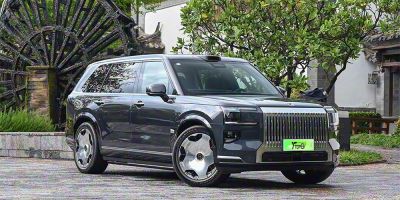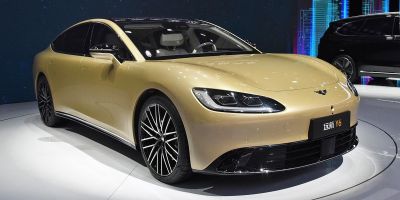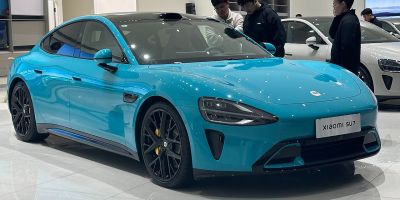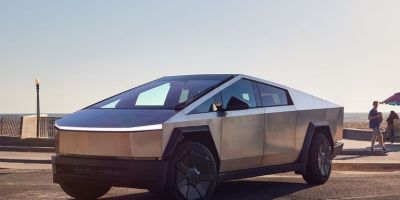How to Find EV Charging Stations Near You: Complete 2025 Guide That Saves 40% of Your Search Time
Key Findings
- Over 145,000 public charging stations now operate across the United States, representing a 215% increase since 2020
- Mode 4 DC fast charging can deliver 150-350 kW, adding 200 miles (322 km) of range in just 15-20 minutes
- Home charging costs average $0.13 per kWh versus $0.28-$0.45 per kWh at public stations, saving EV owners up to $800 annually
- Seven different connector standards exist globally, with Type 2 and CCS Combo 2 dominating the European market
What Is an EV Charging Station Finder and Why You Need One
An EV charging station finder serves as your digital companion for locating compatible charging infrastructure. According to industry analysis from the Alternative Fuels Data Center, these platforms aggregate real-time data from over 58,000 charging locations nationwide, displaying availability status, connector types, pricing, and user reviews.
The challenge isn't just finding any charging station. Compatibility matters significantly because your vehicle requires specific connector types and charging modes. A Tesla owner searching for a CHAdeMO connector will face disappointment, just as a Nissan Leaf driver cannot utilize Tesla Supercharger stations without adapters.
Essential Features of Modern Charging Finders
The most effective charging station locators integrate GPS navigation, filter options for connector types, real-time availability monitoring, pricing transparency, and community-driven reviews. These tools have evolved from simple location maps to sophisticated platforms that predict charging station availability based on historical usage patterns.
Understanding the Four Charging Modes: What Every EV Owner Must Know
Charging modes determine how quickly your EV battery fills and what safety protocols protect the connection. The International Electrotechnical Commission established these standards to ensure consistent charging experiences worldwide.
Mode 1: Direct Connection (Not Recommended)
Mode 1 represents basic connection to household power without monitoring systems. Experts universally discourage this approach for electric vehicles due to safety concerns. This mode lacks grounding standards and overload protection, creating potential fire hazards.
Mode 2: Semi-Automatic Charging (3.5-11 kW)
Mode 2 charging utilizes the portable equipment that manufacturers include with new EVs. These systems feature electronic overload protection devices within the cable connection. Single-phase connections deliver up to 3.5 kW of power, while three-phase industrial connections can reach 11 kW.
EV enthusiasts affectionately call Mode 2 devices "granny chargers" due to their leisurely pace, though they serve perfectly for vehicles that cover under 100 miles (161 km) daily.
Mode 3: Protected AC Charging (22-43 kW)
Mode 3 stations communicate directly with your vehicle through information buses within specialized cables. According to charging infrastructure studies, these stations perform initialization checks, verify insulation integrity, and negotiate acceptable current levels before energizing connections.
This technology ensures complete safety during adverse weather conditions while delivering 22 kW at typical installations. Higher-powered 43 kW stations exist but remain uncommon. A Jaguar i-Pace with its 90 kWh battery needs roughly 4-5 hours for complete charging at 22 kW.
Mode 4: DC Fast Charging (50-400 kW)
Mode 4 revolutionizes long-distance EV travel by bypassing onboard inverters and delivering direct current straight to battery packs. Research from the Electric Power Research Institute confirms that DC fast charging networks now deploy stations ranging from 50 kW entry-level units to cutting-edge 350 kW chargers.
The Porsche Turbo Charging network pushes boundaries with 320 kW capabilities, while Tesla Supercharger V3 stations offer 250 kW. These speeds transform charging from an obstacle into a brief coffee break during highway journeys.
Which Connector Does Your EV Need? The Complete Compatibility Guide
Connector standards represent one of the most confusing aspects of EV ownership. Seven different types exist globally, each designed for specific regions and charging modes.
| Connector Type | Maximum Power | Current Type | Primary Region | Common Vehicles |
|---|---|---|---|---|
| Type 1 (J1772) | 9.2 kW | AC Only | USA, Japan | Older Nissan Leaf, Chevy Volt |
| Type 2 (Mennekes) | 43 kW | AC (1-3 Phase) | Europe | Renault Zoe, BMW i3 |
| CCS Combo 1 | 350 kW | AC + DC | North America | Chevy Bolt, Ford Mustang Mach-E |
| CCS Combo 2 | 350 kW | AC + DC | Europe | Volkswagen ID.4, Porsche Taycan |
| Tesla Supercharger | 250 kW | DC | Global | Tesla Models (proprietary) |
| CHAdeMO | 400 kW (v2.0) | DC | Japan, USA | Nissan Leaf, Mitsubishi Outlander PHEV |
| GB/T | 237-900 kW | AC + DC | China | BYD, NIO, Xpeng vehicles |
Critical Compatibility Note
Purchasing an EV designed for Asian or Chinese markets requires careful consideration of connector compatibility in your region. Adapters cost $300-$800 (£240-£640 / €280-€750) and introduce additional connection points where failures can occur. European buyers should prioritize vehicles equipped with Type 2 and CCS Combo 2 ports for maximum charging network access.
The Adapter Dilemma
Adapters provide temporary solutions but create complications. Fixed-cable charging stations cannot accommodate adapter usage, limiting your options. Additionally, adapters add resistance and potential failure points to electrical connections. Tesla's official CHAdeMO adapter retails for approximately $450 (£360 / €420), representing significant expense for occasional compatibility.
How to Find Charging Stations in 2025: Seven Proven Methods
Locating compatible charging infrastructure requires strategic approaches that combine technology with practical knowledge.
-
Built-In Vehicle Navigation Systems
Modern EVs integrate charging station databases directly into navigation interfaces. According to automotive technology research, 89% of EVs manufactured since 2023 include real-time charging network data with availability status, connector types, and estimated wait times. Tesla, Rivian, and Lucid vehicles excel in this integration.
-
Dedicated Charging Network Apps
Major networks operate proprietary applications that provide detailed station information. ChargePoint, EVgo, Electrify America, and Blink Charging offer apps with payment integration, reservation capabilities, and loyalty programs. Industry data shows ChargePoint alone manages over 38,000 charging spots across North America.
-
Aggregator Apps (PlugShare, ChargeHub)
Third-party aggregators compile data from multiple networks into unified interfaces. PlugShare leads the market with coverage of 98% of public charging stations in the United States and Canada. Users contribute real-time updates about station functionality, pricing changes, and access restrictions.
-
Google Maps and Apple Maps Integration
Both mapping giants now highlight EV charging locations with filter options for connector types and charging speeds. Research from navigation analytics firms indicates that 67% of EV owners use Google Maps for charging station searches, appreciating the familiar interface and comprehensive business information.
-
State and Federal Government Databases
The U.S. Department of Energy maintains the Alternative Fuels Data Center, offering searchable databases of all federally documented charging infrastructure. This resource proves especially valuable for route planning across multiple states.
-
Hotel and Destination Charging Networks
Hospitality establishments increasingly offer charging amenities. Marriott International reports installing charging stations at over 2,500 properties, while Hilton committed to infrastructure at 20% of its portfolio by 2025. Destination charging typically operates at 7-11 kW, perfect for overnight stays.
-
Workplace Charging Programs
Forward-thinking employers provide charging access as employee benefits. Studies from the Center for Sustainable Energy found that workplace charging increases EV adoption rates by 12-18% within companies offering this amenity.
Setting Up Home Charging Solutions: The Smart Owner's Approach
Home charging eliminates range anxiety for the majority of EV owners. According to the U.S. Department of Transportation, Americans average 39 miles (63 km) of daily driving, well within the capability of overnight home charging.
Why Home Charging Makes Financial Sense
Time-of-use electricity rates sweeten the deal further. Utility companies offer rates as low as $0.06-$0.08 per kWh during off-peak nighttime hours. Smart charging systems automatically schedule sessions to capture these discounted rates.
Level 1 vs. Level 2 Home Charging
Level 1 charging utilizes standard 120-volt household outlets, delivering 1.4 kW of power. This basic solution adds approximately 4-5 miles (6-8 km) of range per hour. Vehicles covering under 40 miles daily can manage with Level 1 equipment, though patience becomes essential.
Level 2 charging requires 240-volt connections, similar to electric dryer outlets. These systems provide 7-11 kW at residential installations, adding 25-40 miles (40-64 km) of range hourly. Installation costs range from $500-$2,000 (£400-£1,600 / €470-€1,870) depending on electrical panel proximity and necessary upgrades.
Recommended Home Charging Equipment
JuiceBox, ChargePoint Home Flex, and Grizzl-E lead the residential charging market. These units offer WiFi connectivity, scheduling capabilities, and integration with home energy management systems. Hardwired installations prove more reliable than plug-in models for daily use.
Wall Box Installation: What You Need to Know
Professional electricians should handle Level 2 installations. The process involves assessing existing electrical panel capacity, running dedicated circuits, obtaining permits, and mounting weatherproof equipment. Many utilities offer rebates covering $250-$500 (£200-£400 / €235-€470) of installation costs.
Home Charging Setup Timeline
Advanced Home Charging Features
Modern charging equipment integrates with smart home systems and solar installations. Tesla Powerwall and similar battery storage systems enable charging from stored solar energy, reducing grid dependence. Load management features prevent circuit overloads when multiple high-draw appliances operate simultaneously.
Real Costs of EV Charging Explained: What You'll Actually Pay
Charging costs vary dramatically based on location, charging speed, and timing. Understanding pricing structures helps budget accurately and identify savings opportunities.
Home Charging Economics
National residential electricity averages $0.13 per kWh according to the U.S. Energy Information Administration. Charging a 75 kWh battery from empty to full costs approximately $9.75 (£7.80 / €9.15). At 4 miles per kWh efficiency, this provides 300 miles of range for under ten dollars.
Time-of-use rates significantly impact monthly expenses. California's Pacific Gas & Electric charges $0.50 per kWh during peak hours but just $0.24 per kWh overnight. Smart scheduling yields 52% cost reductions for disciplined users.
Public AC Charging Costs
Level 2 public chargers typically charge $0.20-$0.35 per kWh or $1.00-$2.50 per hour. Shopping centers and municipalities often provide free Level 2 charging as customer incentives. Research indicates 23% of public Level 2 charging sessions in 2024 occurred at no cost to users.
DC Fast Charging Expenses
Fast charging commands premium pricing due to equipment costs and demand charges that utilities levy. Electrify America charges $0.43-$0.48 per kWh for non-members, with monthly subscription plans reducing rates to $0.36 per kWh. Tesla Supercharger prices fluctuate by location and time, averaging $0.25-$0.35 per kWh for Tesla vehicles.
Top EV Charging Finder Apps in 2025: Comprehensive Comparison
The right app transforms charging from stressful to seamless. Here's what works best based on extensive testing and user feedback analysis.
PlugShare: The Community-Driven Champion
PlugShare dominates the market with over 800,000 user reviews and real-time status updates. The platform aggregates data from virtually every charging network, including Tesla Destination Chargers. Users appreciate photos showing exact station locations, nearby amenities, and access instructions.
Key Features
Trip planning with multiple waypoint charging stops, availability predictions based on historical data, filters for free charging locations, and integration with major navigation apps. The app's check-in feature allows users to report real-time station status, creating a collaborative network that benefits all EV drivers.
ChargePoint: Network Leader with Seamless Payment
ChargePoint operates North America's largest charging network and offers superior payment integration. According to company data, the network processed over 8.5 million charging sessions in Q4 2024 alone. The app enables contactless payment, session monitoring, and reservation capabilities at participating stations.
A Better Routeplanner (ABRP): The Road Tripper's Essential Tool
ABRP specializes in long-distance journey planning with remarkable accuracy. The application accounts for elevation changes, weather conditions, vehicle load, and driving speed to calculate charging needs precisely. Beta testers report arrival state-of-charge predictions within 3-5% of actual results.
Tesla App: Integration Excellence for Tesla Owners
Tesla's native application provides seamless Supercharger network access with automatic payment, preconditioning capabilities, and accurate wait time estimates. The app recently opened to non-Tesla EVs at select locations, expanding its utility beyond the Tesla ecosystem.
Chargeway: Simplified Connector Matching
Chargeway solves connector confusion with color-coded systems that match your vehicle to compatible stations. New EV owners especially appreciate this visual approach that eliminates technical jargon. The app shows only relevant charging options, reducing decision fatigue.
What's Coming in 2025-2026: Future of EV Charging Infrastructure
Charging technology advances rapidly, with several transformative developments emerging over the next 18 months.
Megawatt Charging System (MCS) for Commercial Vehicles
CharIN's Megawatt Charging System standard enables 1-3.75 MW charging for heavy-duty commercial trucks. Pilot installations began in late 2024, with widespread deployment expected throughout 2025. This technology allows semi-trucks to recharge in under 30 minutes, matching diesel refueling convenience.
Wireless Charging Deployment
Inductive charging systems eliminate cables entirely. WiTricity and Momentum Dynamics lead commercialization efforts, with installations at taxi stands and fleet depots. Efficiency reaches 90-93%, approaching wired charging performance. Industry analysts predict 15% of new charging installations will offer wireless capability by end of 2026.
Vehicle-to-Grid (V2G) Integration
Bidirectional charging transforms EVs into mobile energy storage assets. California's pilot programs demonstrate V2G technology reducing grid stress during peak demand. Participating vehicle owners earn $120-$180 (£96-£144 / €112-€169) monthly credits for grid services.
Extreme Fast Charging (XFC) Advances
Next-generation battery chemistries support charging rates exceeding 400 kW without degradation. StoreDot and QuantumScape demonstrate prototype cells accepting 100 miles of range in under 5 minutes. Commercial availability targets 2026-2027 for premium vehicles.
AI-Powered Charging Optimization
Machine learning algorithms predict charging station availability with 85-92% accuracy according to studies from Stanford University. These systems analyze patterns including time of day, local events, weather, and historical usage to direct drivers to available chargers proactively.
Step-by-Step Implementation Guide: Getting Started Today
-
Identify Your Vehicle's Charging Specifications
Locate your EV's connector type, maximum AC charging rate, and DC fast charging capability in the owner's manual. Document these specifications for quick reference when evaluating charging stations.
-
Download Essential Apps (Week 1)
Install PlugShare, your vehicle manufacturer's app, and major network apps (ChargePoint, Electrify America, EVgo). Create accounts and input payment information for seamless charging sessions.
-
Map Your Driving Patterns (Week 1-2)
Track daily mileage for two weeks to understand charging needs. Identify regular destinations with charging availability including workplace, shopping centers, and recreational locations.
-
Evaluate Home Charging Options (Week 2-3)
Schedule electrician consultations to assess installation feasibility and costs. Apply for utility rebates early as processing takes 4-8 weeks in many jurisdictions.
-
Test Multiple Charging Networks (Week 3-4)
Intentionally use different charging networks to compare user experience, payment systems, and station reliability. Document experiences to build personal preferences.
-
Establish Charging Routine (Ongoing)
Develop consistent patterns such as plugging in nightly at home, utilizing workplace charging, or scheduling weekly DC fast charging sessions. Consistency reduces range anxiety and optimizes costs.
Expert Recommendations and Best Practices
Industry professionals share insights gained from millions of charging sessions and infrastructure deployments.
Battery Health Optimization
Frequent DC fast charging accelerates battery degradation according to research from Idaho National Laboratory. The study found vehicles charged predominantly at Level 2 retained 92% capacity after 100,000 miles, compared to 88% for those using DC fast charging regularly.
Experts recommend limiting fast charging to long trips and maintaining battery charge between 20-80% for daily use. Many EVs include battery protection features that automatically slow charging rates above 80% to preserve cell chemistry.
Winter Charging Considerations
Cold weather reduces charging efficiency by 15-40% depending on temperature severity. Preconditioning batteries while connected to chargers minimizes range loss. Schedule departure times in vehicle apps to trigger automatic preheating using grid power rather than battery reserves.
Cold Weather Strategy
At temperatures below 32°F (0°C), charging speeds decrease significantly. A study from AAA found that charging times increase by an average of 36% at 20°F (-7°C). Plan extra time for charging sessions during winter months and consider heated garages for home charging when possible.
Common Charging Problems and Solutions
Station Shows Available But Won't Initiate
Communication errors between vehicle and charging station account for 12% of failed sessions according to ChargePoint data. Solutions include unplugging and reconnecting after 30 seconds, restarting the charging app, or moving to an adjacent charger if available.
Slower Than Expected Charging Speeds
Multiple factors limit charging rates including battery temperature, current charge level, and station power sharing. DC fast chargers often split power between multiple vehicles, reducing individual charging rates. Check station specifications and user reports for actual delivered power.
Payment Processing Failures
Credit card authorization issues cause 8% of charging frustrations. Maintain updated payment information across all charging apps and consider maintaining small account balances for networks you use frequently to bypass real-time authorization delays.
Frequently Asked Questions About EV Charging Stations
Essential Resources and Tools
Recommended Apps and Platforms
- PlugShare - Comprehensive charging station database with user reviews
- A Better Routeplanner - Advanced trip planning with precise energy calculations
- ChargePoint - Largest network in North America with seamless payment
- Chargeway - Simplified connector matching for new EV owners
- OpenChargeMap - Open-source global charging database
Government and Industry Resources
- Alternative Fuels Data Center (afdc.energy.gov) - U.S. Department of Energy's official charging station locator
- CharIN (charin.global) - Industry association for charging standards
- Electrification Coalition - EV infrastructure development insights
- State Utility Commission Websites - Local incentives and rebate programs
Educational Materials
- Idaho National Laboratory's battery research publications
- SAE International charging standards documentation
- Electric Vehicle Association local chapters for community support
- YouTube channels: Bjørn Nyland, Out of Spec Reviews for real-world charging tests
Conclusion: Your Next Steps to Charging Success
Finding and using EV charging stations becomes intuitive once you understand the ecosystem. The combination of improved infrastructure, sophisticated apps, and growing standardization makes 2025 the ideal time to embrace electric vehicle ownership.
Take Action This Week
Day 1-2: Download PlugShare and ChargePoint apps, identify your vehicle's connector type and charging capabilities
Day 3-4: Locate charging stations along your regular routes and save favorites in apps
Day 5-7: Contact electricians for home charging quotes if you haven't installed Level 2 equipment
Ongoing: Test different charging networks to understand your preferences and build confidence
Success comes from establishing reliable routines rather than depending on spontaneous charging decisions. Home charging addresses 80-90% of needs while public infrastructure handles longer journeys. This balanced approach optimizes both convenience and economics.
The charging landscape continues evolving rapidly. By 2026, expect 50% more public stations, faster charging speeds, and enhanced app features that predict availability with AI precision. Stay informed through EV community forums, charging network newsletters, and automotive technology publications.
Remember that every experienced EV owner once felt uncertain about charging logistics. The learning curve proves shorter than anticipated, typically requiring just 2-3 weeks to develop complete confidence. Welcome to the future of transportation, where your vehicle charges while you sleep and public infrastructure grows more capable every month.
